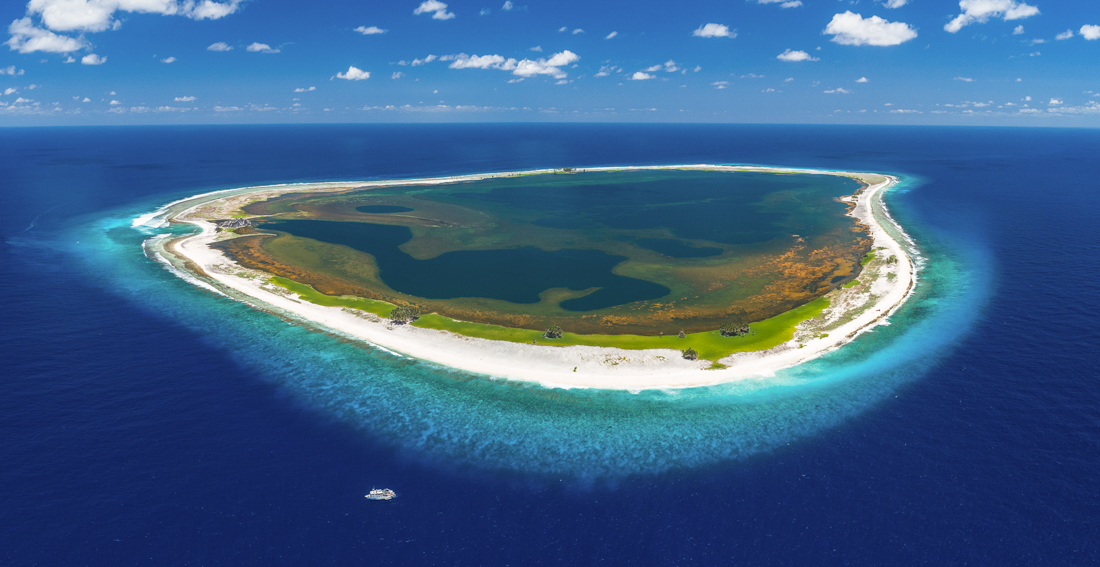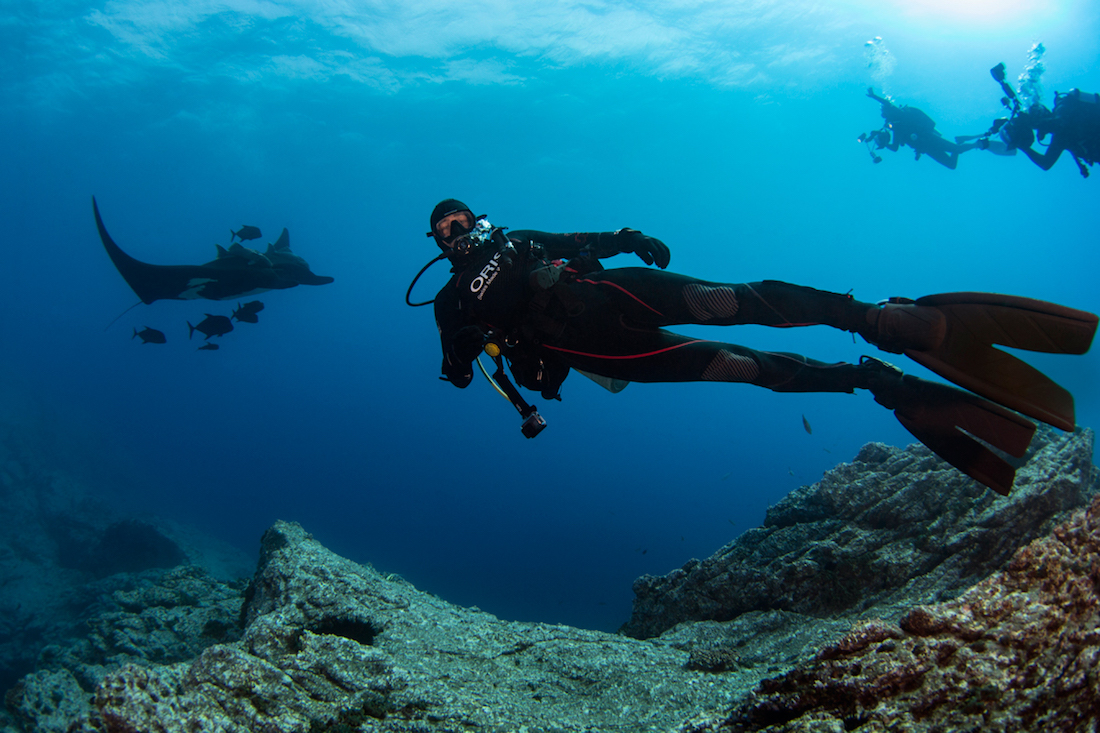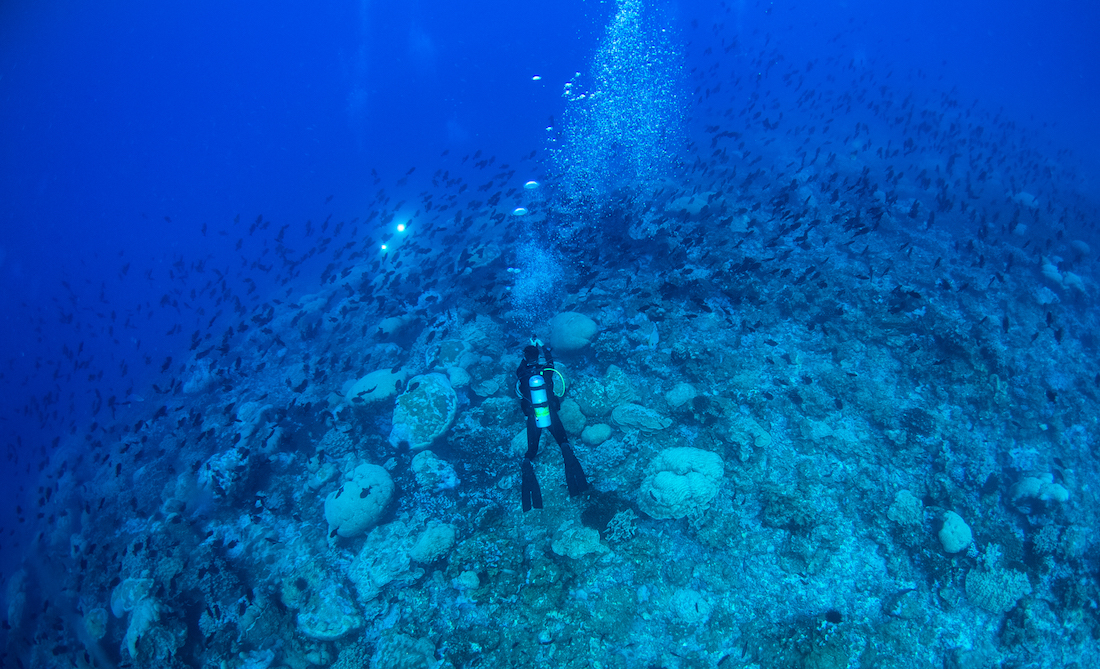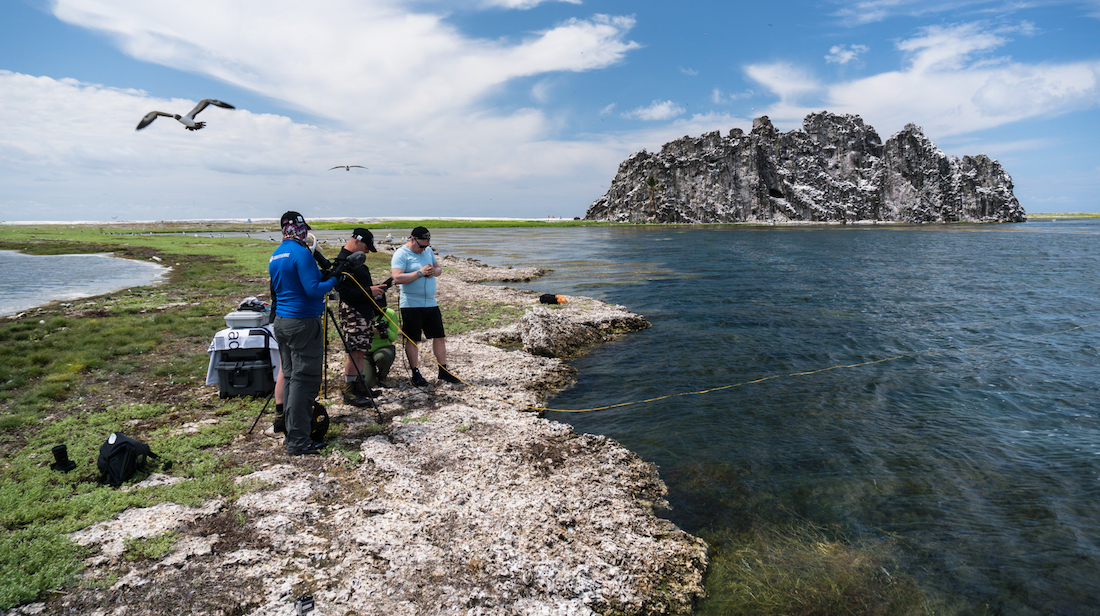
Under the cover of night, I pass a heavy bag of dive gear to a waiting hand and then pull myself aboard the Nautilus Under Sea. This 96-foot craft would be my diesel-powered home for the next 16 days, and my ride to one of the most remote island atolls in the world. I’m tagging along on the “Big Migrations II Expedition” to Clipperton Island, some 1,236 kilometers (768 miles) into the Pacific Ocean, south of the Baja Peninsula. Sponsored in no small part by Oris watches, I am the only “watch press” member aboard and one of two guests directly invited by Oris, the other being an affable Brit named Michael who won a spot on the trip via the MyOris owners club.
The trip itinerary laid out a busy voyage of diving, island exploration, and various scientific objectives. As requisite companions, I have brought the Oris Aquis Regulateur “Der Meistertaucher” and the Aquis Hammerhead LE, both representing the current cutting edge of Oris’ dive watch design and manufacturing. By nearly any metric, this trip is like nothing I have experienced in the past. Arriving in San José del Cabo, I met the expedition leaders, French-Canadian explorers, and oceanographers Michel Labrecque and Julie Ouimet, both of whom are far more kind and accommodating than could be expected for a random watch writer that was attached to an expedition they had spent more than two years willing into existence via their own blood, sweat, and untold tears.
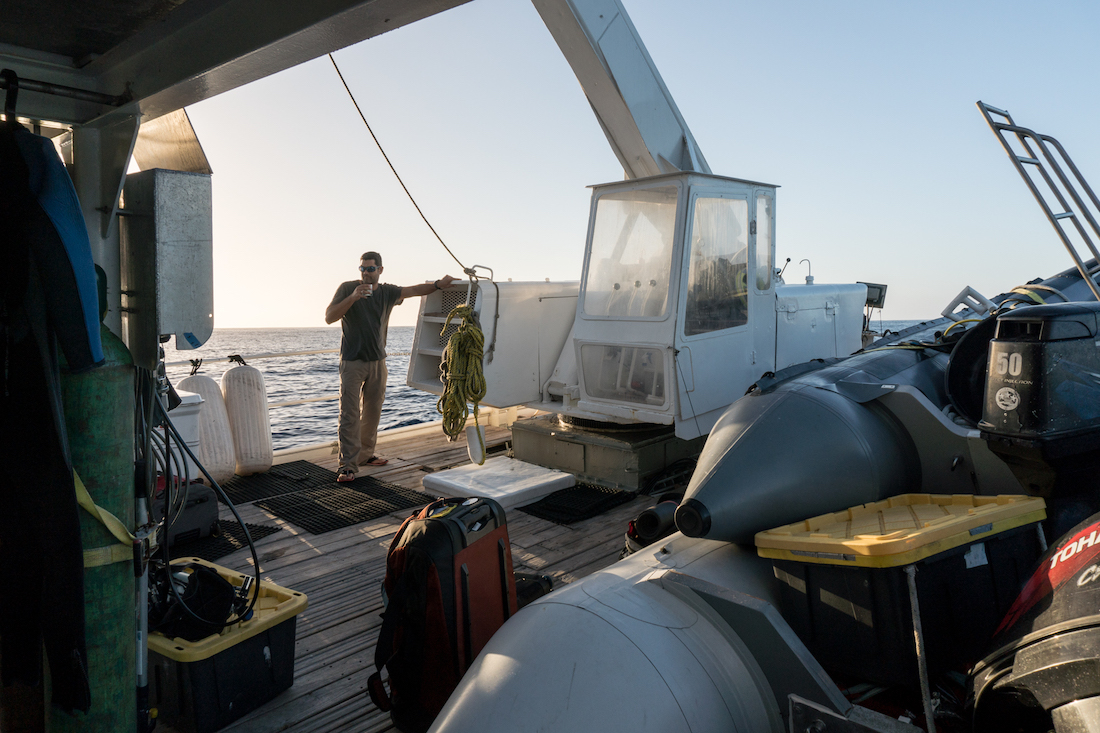
Hostile and uninhabited by humans since 1945, Clipperton is a six square kilometer (2.3 square miles) coral atoll surrounding a large freshwater lagoon. Cousteau and his crew visited Clipperton in 1978, calling their subsequent film The Island that Time Forgot. I’ve included the film below as Cousteau did a simply fantastic job of covering the multifaceted story of Clipperton, much of which I will not address in the (failed) interest of brevity. It’s definitely worth a viewing:
Currently claimed by France, Clipperton was once under the purview of Mexico and for a time in the mid ’40s, housed a small American military presence. Today, aside from the occasional illegal fishing operation or interested scientific party, visitors are few and far between.
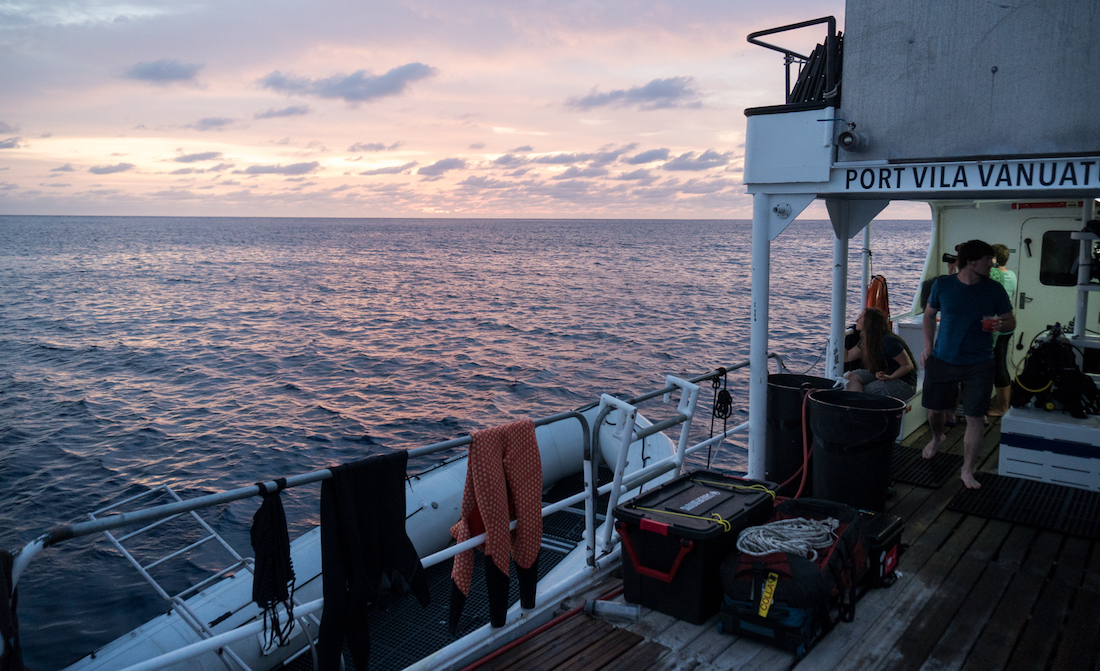
En Route to Clipperton
With approval from the French Government, Big Migrations II spanned April 29th to May 14th. Leaving from San José del Cabo at the southern tip of the Baja Peninsula, we made the atoll by noon on Wednesday May 3rd, after more than 70 hours under power. The seas are calm and I found that as long as I ate regularly I could prevent the onset of seasickness. Boat life, especially under the care of the Under Sea’s crew, was relaxing, novel, and pleasantly disconnected from the everyday pattern of land-based life.
The small two-berth cabin I shared with Michael was simple but a fine enough place to sleep, with two bunks, a private bathroom, and full wood paneling that creaked and protested under the ship’s pitch and roll at sea. The days at sea proved to be surprisingly lethargic. I found myself passing the hours with books, and by sleeping more than I have since university.
After successfully helping to establish a no-fishing zone around Clipperton following the first Big Migrations expedition in 2016, Big Migrations II leaders Michel and Julie collected a team with a wide range of goals for the sequel mission. Spanning reef surveys, debris studies, ROV exploration, shark tagging, and more, there were a lot of moving parts. Experienced divers and avid adventurers, Michel and Julie’s company, N2Pix, is based in Quebec, Canada and they are both fellows of the famed Explorers Club. They hope that the reports from Big Migrations II will inform the creation of a larger protected area around Clipperton, eventually paving the way for a protected migration corridor from Baja to Chile.
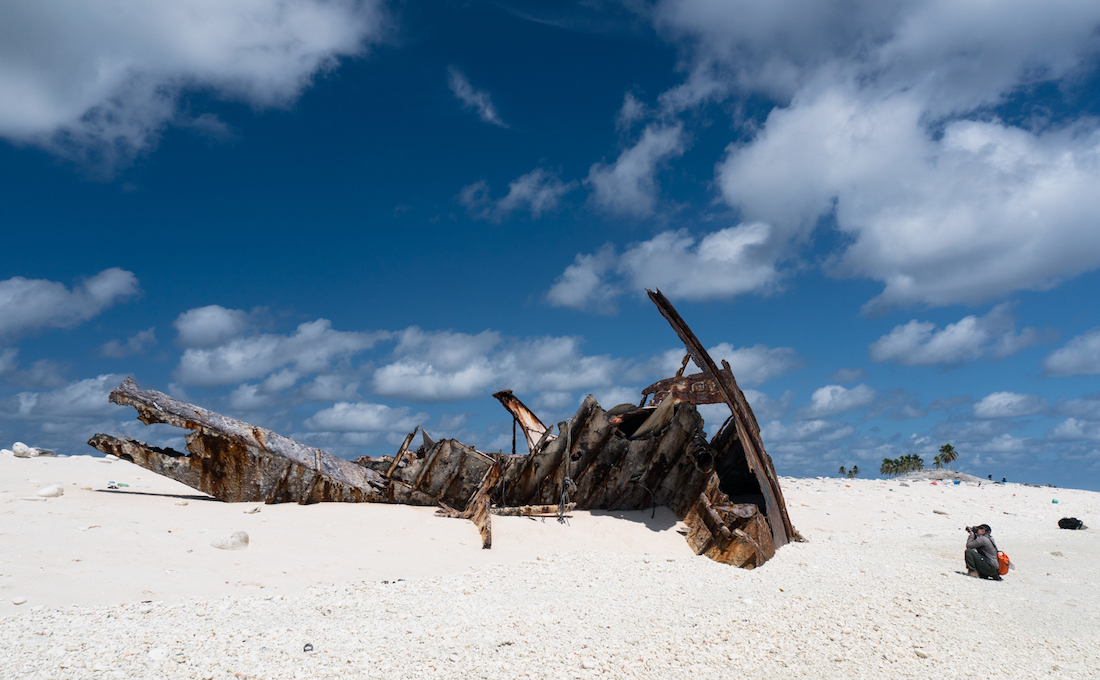
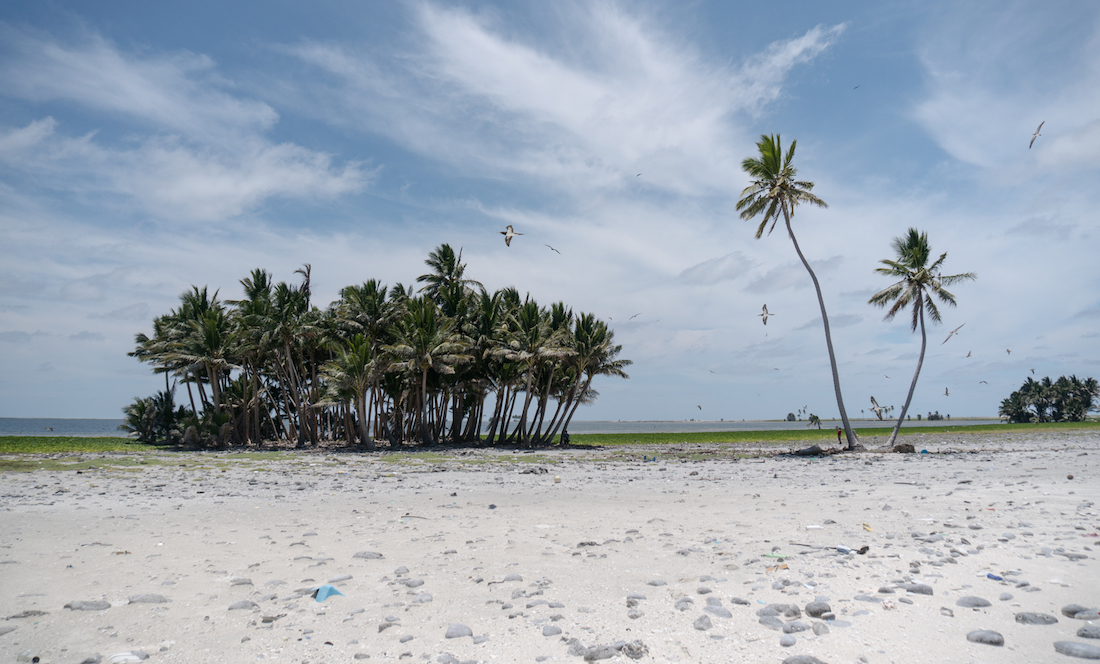
At Clipperton
By mid-morning on May 3rd, with an escort of boobies, frigates, and dolphins accompanying us on calm seas, we began to see palm trees breaking the flat contrast of the horizon. As if from nothing, we came upon the thin topography of Clipperton. We dropped anchor off the southeast coast, facing the only visible rock formation on the island, the aptly named Clipperton Rock. The dive skiffs were unloaded as the group eagerly loitered on the dive deck. We had come many miles and it was time to dive.
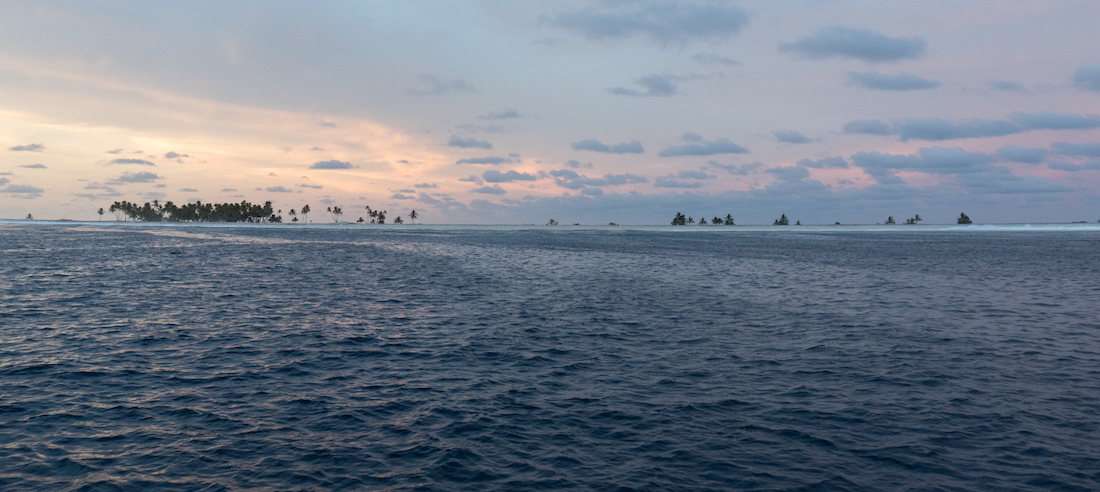
Oris had kindly supplied me a snug 5mm wetsuit, which was more than capable of keeping up with the 30 °C (86 °F) waters surrounding Clipperton. Given the considerable remoteness of Clipperton, this was no location to test one’s limits as a diver. Medical support was limited to a well-stocked first-aid cabinet and a scientist who had practice suturing sharks. There was no hyperbaric chamber, no possibility of air rescue, no room for any major error. So, with the boat motto quickly becoming “we have a no accident policy” we would dive easy, cool, like The Fonz in an Oris-branded wetsuit.
And dive we did. The water is warm, with visibility often exceeding 15 meters (50 feet) in a topography that transitions from a wall, to a sloping rise, to the coral shallows leading to shore. While biodiversity on Clipperton is limited, biomass is impressive, with large populations of more than one hundred identified species of fish and wildlife. All of my dives on Clipperton were spent on vast fields of complicated hard corals, surrounded by an array of small fish, territorial moray eels, and an ever-present cast of jacks and curious blue trevallies.
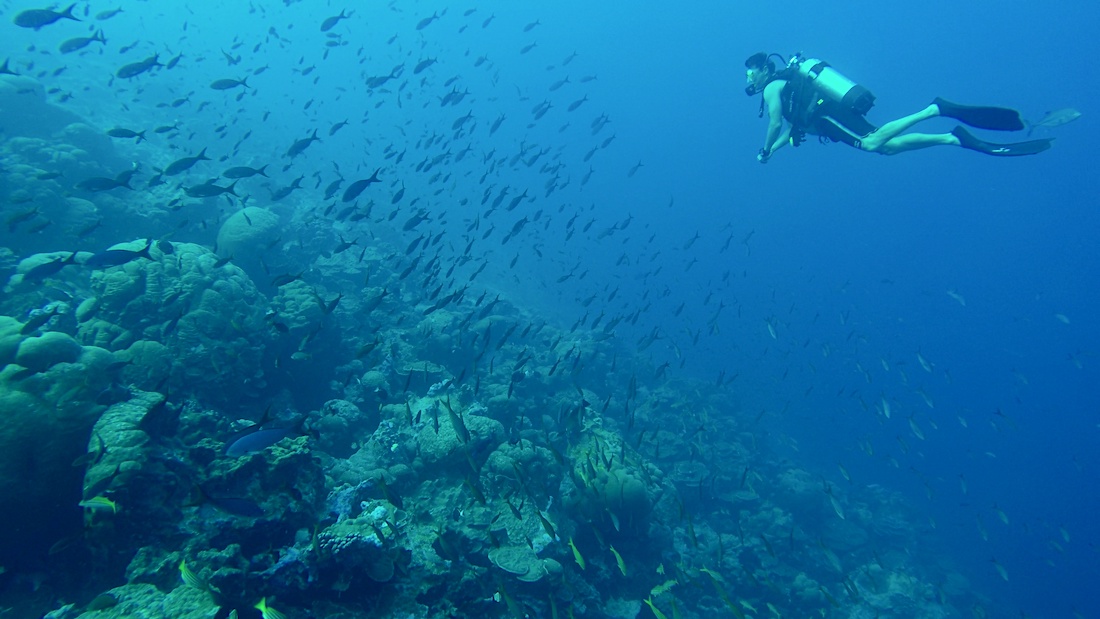
On occasion, we were treated to the occasional small Galapagos or Silvertip shark, lovely Golden Puffers, and during one dive I found myself in an expansive tornado of countless black triggerfish. But for all of Clipperton’s life, the reef showed considerable evidence of fishing. From markers and buoys and abandoned nets, to a nearly unbelievable amount of entangled and often overgrown long line, Clipperton’s remote location makes it an ideal spot for illegal fishing. In total, divers on the expedition would collect more than three kilometers of long line in just a handful of days diving around the atoll.

